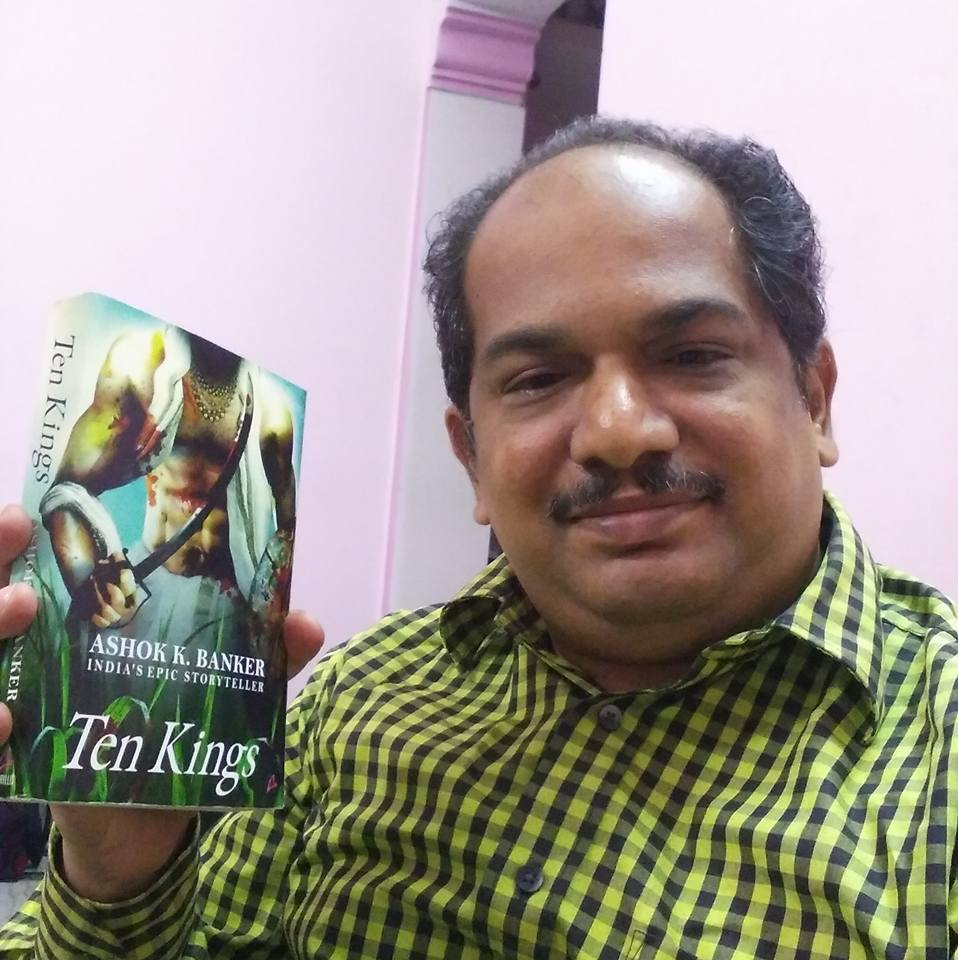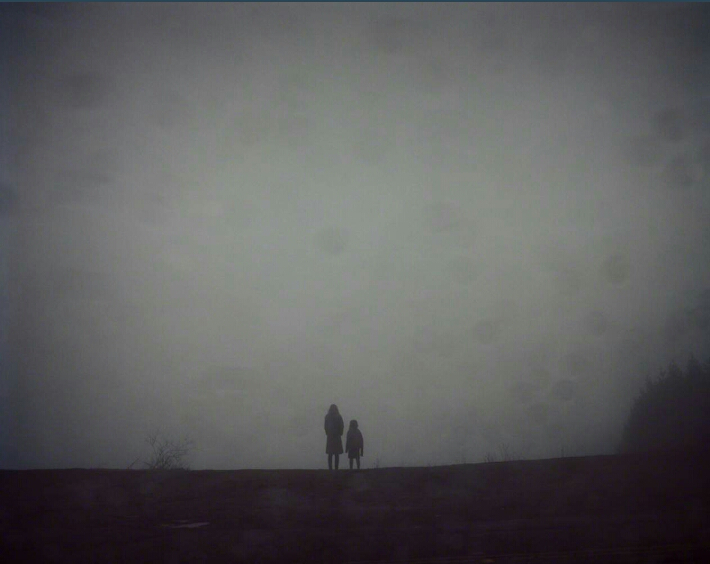Lines from Ashok K. Banker’s Ten Kings
Guru Vashishta approached. ‘Samrat Sudas,’ he daid, emphasizing the new title with evident relish. ‘What do you wish to name your new city’
Sudas had many names in mind. ‘Is there an auspicious letter I should use to start the name?’
‘The syllable Hu or Ha is auspicious,’ Guru Vashishta suggested.
Sudas nodded slowly. ‘I have a name that begins with that syllable.’
‘What is it?’ asked the guru.
‘Harappa,’ Sudas said.
The guru nodded approvingly. ‘Harappa it is, then.’

Yes, Ashok K. Banker’s novel ‘Ten Kings’ is the story of the construction of one of the oldest city the human civilization has ever known, the story of King Sudas and the story of ‘Harappa’. It is not all. As the name of the novel suggests it is the story of ‘Ten Kings’ of Bharata land who took to war on Sudas, the king of Trtsu and the leader of all the tribes on one stormy day and were defeated by the miniature army of brave heart Sudas and the forces of nature.
Synopsis of ‘Ten Kings’
Ten Kings is a wonderful narration of the historical battle of Dasarajna mentioned in Rig Veda. I should say that the war which has been mentioned in a single shloka (verse) in Rig Veda has been given a beautiful shape by Ashok Banker. Lovely writing I would say!!
The Cover Page
The cover page of the novel is just superb and assures goose-bumps even before you turn on to read Chapter 1. You can see the figure of a muscular man, you could imagine him to be King Sudas, and the protagonist of the story, holding a blood stained sword in his right hand and a shield in his left hand. His entire body, angavastram (an elongated cloth in the form of veil worn around the neck by the ancient kings and noblemen) and lower wear. He is shown walking in grass stained with blood. In the bottom slot you can find the name of the author and the title written one below the other. The cover page gives an impression of a war story and it is indeed a ‘War story’!!
The Title
The title ‘Ten Kings’ actually points towards the antagonists in the story, points towards the losers in the war rather than the protagonist King Sudas who wins the battle and honors. The title is apt because the ten kings form a greater force and representation of arrogance which ultimately loses to humbleness, goodness and strategy. The Ten Kings depict and represent all the foreign invasions which were tried on the Bharata bhoomi, i.e. the Indian subcontinent and King Sudas represents the valor of India and Indian rulers who always loved their homeland and defended their land and respect against all odds.
Story of ‘Ten Kings’ in short
The plot of the story is set in 3400 BCE
Sudas is the king of Trtsu kingdom, a tribe to be precise, of ancient India located in the region somewhere near to modern day Punjab, North India.
The story starts with a wedding ceremony conducted in the Trtsu land to which all the kings and royal families around the land, mainly the Dasa Rajna i.e. Ten Kings have attended. After the festivities the men and women lay asleep drenched in alcohol while Sudas awakes early in the morning. When he goes for a stroll around horse stable, he encounters Anu, the king of Anu who happens to be his brother-in-law. They both have a verbal combat.
Early in the morning, Sudas rides on his white mare Saryu to meet his Guru, Vashishta who resides on mount Uttunga. Along with him ride his son Indraut and daughter Indrani. On the mountain which is also called ‘cradle of fire’ as Agni or fire is worshipped there, they witness a heated argument between Vashishta and the warrior-Guru Vishwamitra, the mentor of other tribes. Vashishta later tells that Vishwamitra sends warning to Sudas not to construct the new city. At the same time Sudas and his kids witness a Trtsu out-rider posted on the banks of Parusni River as a part of security. Sudas runs downhill and rides towards the out-rider who gets injured by the arrows shot by the chasing enemies. Sudas single handedly kills more than 1 score of enemy soldiers in the ocean of Kusha grass. One soldier in captivity reveals the word ‘Dasa Rajna’ before dying. It means that the 10 kings are plotting to kill Sudas, invade the land of Trtsu and occupy it after killing all the inhabitants.
Sudas rushes back home to see king Anu occupying his throne and all the other kings, allies and royal-men who were drunk throat-full behaving weird in the central hall of his kingdom. Much to his surprise his wife Sudevi too had sided her half-brother which later Sudas learns is due to pressure from Anu. Anu gives reference of matriarchal rules which allows him to take over Trtsu land with the permission and authorization of his sister. When Sudas is humiliated he gives clarification of matriarchal rules and tells that Anu’s claims are wrong. Anu invites Sudas for a combat but Sudas refuses telling that it is against the dharma of Aryan clan. Later it is decided that the Ten Kings would take on Trtsu army in the battle on the same day on the banks of Parusni River.
The equation gets odd as Trtsu is fighting a might army which is 10 times larger than their own army with well equipped cavalry, chariots, elephants and foot soldiers.
Sudas is fearless. He tells that he has only one thing against the Dasarajna, ‘the strategy’ along with the blessings of his Guru Vashishta and their clan deity Lord Indra.
The War begins.
Sudas and his army destroy Anu’s army in the ambush amidst Kusha grass fields. They guide the rest of the army into a trap wherein they use the weapons made up of Iron, the gift of Lord Indra as they claim, to slaughter many enemies. They injure the enemy elephants and create a stampede wherein thousands of enemy soldiers lose their life. Guru Vashishtas plans and foresight come to their help. The climate and thunder god Indra too come to their rescue. Vashishta manages to divert the opponent army by creating a big sacrificial fire on the hill top even as Sudas, his family, lieutenants and soldiers escape over the bridge constructed over the Parushni River to the opposite shore right into the heart of the enemy camp. The iron pole inserted into the mount Uttunga draws the lightening towards it. The high electricity flowing through the iron pole deep into the mountain causes it to explode releasing hot currents and lava of water. The floods wash away the enemy army.
The story ends with Sudas constructing a city and naming it as Harappa.
The Characters
There are wonderful characters throughout the plot but everyone play short roles around Sudas, the king of Trtsu tribe of Aryans.
King Sudas – The character of Sudas is shown as a brave heart leader who dreams of having an undisputed and undivided Bharatavarsha. He believes in what his father, King Pijavana had once said ‘Better to be a man and respected like a king, than to be a king respected by no man’. He is courageous, intelligent and self-made king who believes in independence. He is kind hearted towards his subjects and is peace-loving. He is a man of progressive thoughts. Being guided by their clan mentor Guru Vashishta, Sudas dreams to build a sophisticated and well equipped fortress city.
Sudas’s brilliance in warfare and his wily skills to deceive his enemies is shown in the ‘battle of dasarajna’ wherein his army of 6000 take on a mammoth army 66660 led by 10 opposing kings. Though the war was unplanned and uncalled one for Sudas, which came as a surprise from his enemies (whom he thought were friends), he manages to defeat a mighty army. Though the enemy kings had well planned the attack since a year or so, Sudas, with his presence of mind and battle-wits proves that it is the day of the game on which you have to play your right cards and then the destiny and fortune, both would favor the brave. Ultimately he manages to construct the city of Harappa.
Anu – The king of Anu, carrying the same name is the antagonist in the story. He is the one who leads the other 9 kings against Sudas and Trtsu army. He is shown as an arrogant warrior who is ruthless and aims to finish the opponents to the last man, woman and child. He is brother-in-law of Sudas and is envious about the progressive thoughts of Sudas. His greed leads to the defeat of Dasarajna, though they were a massive force with well equipped army.
There are other characters who make the story interesting and gripping. They have short roles in this beautifully written war-saga. They include Guru Vashishta, Guru Vishwamitra, queen Sudevi – wife of Sudas, Indraut and Indrani – kids of Sudas, the dog Sarama, the mare Saryu and many more.
‘Battle of Dasarajna’ – This is the best character in the story because the entire book is about the war, its planning and execution. The author Ashok K Banker needs applause for transforming a shloka from Rigveda into a gripping war-tale.
What I loved the most?
I loved the whole novel as it was un-put-down-able. But the aspects of the novel I loved the most are –
The war of Dasarajna – The author has written the ‘battle scenes’ with such precision that it seems that he had personally been there at the battle-field. The war scenes look so realistic and play before your eyes. I personally enjoyed and visualized the battle and I am not exaggerating if I tell that the novel created goosebumps. Though it is a history-recreated, it is nothing short of a gripping thriller. Every moment the plot makes you anxious and nervous so as to ‘what might happen next?.’ It is impossible to believe that a small army goes into the battlefield unprepared and manages to win the battle against a well equipped, well planned and well-organized army, 10-15 times larger in dimension and strength, that too in a few hours. If this history has really happened then it should be one of the greatest battles our soil has ever seen, the battle of dharma, the battle to protect ones land, a battle of valor. The story speaks volumes against a capable leader and his leadership. I feel it should be thought in ‘leadership camps’ and all those who believe in leadership should read this lovely stuff!!
Leadership of Sudas – Sudas stands as a representative of good leadership. He believes in constructive leadership and not in destructive ways. He is brave and courageous but trusts in keeping peace and harmony. But the other angle of an aggressive leader is also shown in the plot. When he finds no ways of keeping in peace with his neighboring kings who are bent on invading and occupying his territory, he assembles his best men to form a small army. Though he knows that he is mathematically against a big number and that his army would be crushed in no time, he believes in strategy. He plans the game of war in his mind and plays his cards aptly at right times. He manages to win against the large enemy force and construct the fortress city of Harappa.
Excellently written Battle scenes – Since the whole plot of the novel deals with the battle, the battle scenes are important. The author has brilliantly portrayed the battle scenes and you will definitely find yourself standing in the battlefield witnessing the ‘war of dasarajna’. I loved the scene where Rajan Sudas single handedly kills more than a score of enemy intruders in the kusha grass ambush. I equally loved the first stage of battle wherein Sudas and his tiny army kill a big army of opponents in the kusha grash ambush, wherein Sudas misleads the enemy army into a trap and gives a surprise counter-attack with the ‘iron made weapons’ and the attack they make on the enemy elephants and create a stampede with the enraged elephants stamping the enemy camp to death.
Use of Technology – Many scenes describe the use of skills and technology in the Vedic period, especially in ‘war-fare’. It shows that the art-of-war was technologically planned and executed. Though the Dasarajna battle takes place on a single day, the plot of the story shows that the enemies had prepared themselves for a year or so. Only King Sudas did not have the time for preparation as the war came in as a surprise attack for him and his army.
Below mentioned are some of the interesting parts of the story which depicts the use of technology –
Damming of Parushni River by the 10 kings, by bridging it and reducing the flow of river stream downhill so that they can lead their army across the river-bed easily and trespass into the Trtsu territory
Use of sophisticated chariots, grade-specific armors, cavalry and foot soldiers in the war
Use of iron weapons by ‘Sudas and his army’ to kill the enemy soldiers and proclaiming that the metal has been used for the first time in warfare, indicates the beginning of Iron Age
Use of Iron rods by Guru Vishwamitra to attract the charges from lightening and divert them into the stone-bed of the mountain shows that the ancient saints and stalwarts had accurate knowledge of ‘forces of nature’ and using them for producing energy (conversion of light energy into heat energy)
Geographical explanation of Ancient Vedic land – The author seems to have done considerably good research work on the geography and the nature of inhabitants of the ancient Vedic period. The explanation of Trtsu land and the neighboring kingdoms located around the mentioned land i.e. the land, rivers, landscapes and vegetations which were present around the region of modern day Punjab, Northern India have been brilliantly written and visualized by the author. While reading the description it is no exaggeration that you will be taken into the aura of the beautiful Trtsu land.
Pets and Love for Animals – A scene shows King Sudas drinking water from the troughs meant for storing water for the horses and his favorite horses coming and caressing him. He proclaims that he has never seen animals as different beings and that he gives them equal status as his human counterparts. This shows the immense love and affection the Trtsu and Vedic people had towards the animals and nature. The mare Saryu seems to understand Sudas’s mind and emotions and so does his dog Sarama. They are not only his best friends but are a part of his family. They accompany his family in goods, bad and even in wars.
What I didn’t love much?
At times the story seems to be slow and lethargic though it picks up pace in consecutive chapters with high-action and war scenes. Some scenes seem to be stretched beyond limits but I can assure you that they don’t keep you in boredom for long time.
You can’t find variations in the plot because the story involves only one incident which happens in a few hours of a single day ‘The Battle of Dasarajna’. All emotions are focused with and within the battle. In spite of that Ashok Banker should be given applause for making a gripping tale out of a verse from Rig Veda. There was nothing much the author could have done while creating a big imaginary and visualized plot around an unseen incident from an epic.
Good and lovable lines from ‘Ten Kings’
‘Remember that calamities will come, be it today or the next day. It is how we weather them that defines us. A crisis is a turning point in both the best and worst senses of the term. The wise man turns even the gravest crisis to his advantage. It is at the moment of greatest danger that a man has the opportunity to display his greatest strengths’ – Ten Kings, Kaand 1, Ch 11, Pg 67
‘When genocide begins, it ends at your own doorstep. For the wages of violence is more violence. The price of slaughter is your own death. There is no end to killing. Each new act of violence begets new enemies. Every drop of blood you shed strengthens their resolve against you. The more we kill, the more will rise up against us. It will only end with our own end’ – Ten Kings, Kaand 1, Ch 23, Pg 148
‘For flesh can be sundered, blood can be spilled, and men slain. But dreams can be passed on from generation to generation. We fight today to keep our dream of a Bharat-varsha intact’ – Ten Kings, Kaand 1, Ch 23, Pg 150
‘An elephant needs but one foot to squash a rabbit. What does it serve the rabbit to know there are three more feet capable of achieving the same feet?’ – Ten Kings, Kaand 2, Ch 4, Pg 192
‘Hair could grow later, bodies built up, skills acquired, but the basic talents of a warrior were either present in childhood or could never be learned, Sudas believed’ – Ten Kings, Kaand 2, Ch 14, Pg 270
About the Author
Ashok Kumar Banker is an Indian author and screenwriter. He is one of the best story tellers and many of his acclaimed works have risen to be the bestsellers. His works include mythological and historical retelling, fiction and crime thrillers. He is famous for his retelling of Indian mythological stories which include the hit and bestseller 8-volume Ramayana Series. His Epic India Library is an attempt to retell all the myths, legends and itihasa of the Indian sub-continent in one massive story cycle comprising over 70 volumes, ‘an epic library of India’. His works have been published in 16 languages in 58 countries. His works are also being made into movies and television serials.
Read more about Ashok K. Banker here
Where to find the book?
You can find the novel Ten Kings on amazon and you can get your copy from the below mentioned link
http://www.amazon.in/Ten-Kings-Ashok-Banker/dp/938150654X/ref=sr_1_1?ie=UTF8&qid=1498387622&sr=8-1&keywords=ten+kings
Mini Synopsis
Title – Ten Kings
Author – Ashok K Banker
Publishers – Manjul Publishing House Pvt. Ltd.
Genre – Historical fiction
Concept and Plot – ‘Battle of Dasarajna’ Mandala 7, Rig Veda
My rating – *****(5)
I would like to end my review quoting one of the best lines from the novel –
‘His faith was all he had. And his entire existence, his survival was founded on the principle of knowledge: To know was to understand, to understand was to engage, and to engage was to live fully. Anything less was merely animal existence’ – Ten Kings, Kaand 2, Ch 4, Pg 193
Advertisements Share this:- Ashok K. Banker
- Dasarajna
- Rig Veda
- Ten Kings





